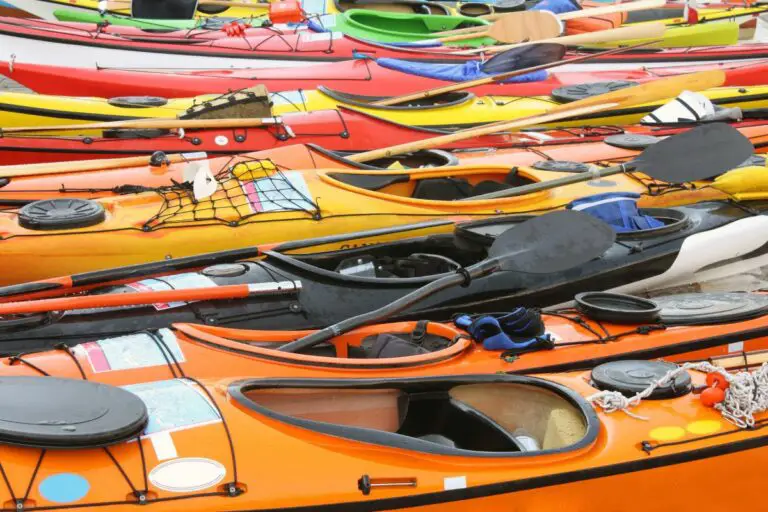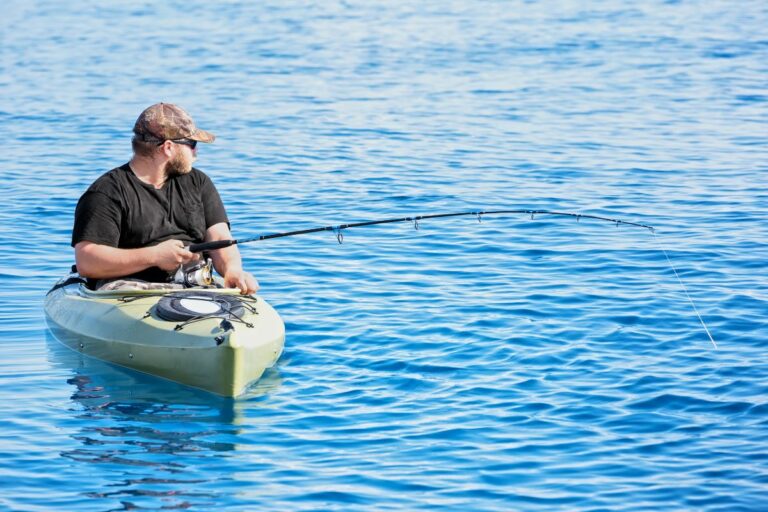Are Sea Kayaks More Stable? 5 Tips to Increase Stability
Kayaking is a versatile and enjoyable activity that can be done on rivers, lakes, and even the open sea. However, not all kayaks are created equal, as they are designed for different purposes, and it can be challenging to know which one is best suited for your needs.
For instance, there are some significant differences in how sea kayaks are designed compared to other types of kayaks, particularly when it comes to stability.
So, are sea kayaks more stable? Or can you just use any kayak in the sea?
Sea kayaks are considered to be more stable than other kayaks, particularly recreational kayaks, because of their wider, longer, and heavier design. They are built to handle rough open water conditions and provide better stability, tracking, and speed.
Keep reading to learn more about the differences between sea kayaks and other kayaks and how to make your kayak more stable.
Table of Contents
The Difference Between Sea Kayaks and Other Kayaks

Sea kayaks and other types of kayaks differ in several ways, including their design, features, and intended use.
For instance, sea kayaks are longer, wider, and heavier than recreational kayaks, making them more suitable for handling rough ocean conditions.
They typically have a V-shaped hull for better tracking and speed and a skeg or rudder to help maintain course in crosswinds or waves. They also have watertight hatches for storing gear and may feature a deck line for safety and rescue purposes.
On the other hand, Recreational kayaks are shorter, wider, and lighter, making them easier to maneuver in calm waters.
They typically have a flat bottom for stability and a larger cockpit for easier entry and exit. While they may have some limited storage, they are not built for long-distance touring or rough ocean conditions.
Are Sea Kayaks More Stable?
Sea kayaks are generally considered more stable than other types of kayaks due to their design and construction.
As mentioned before, sea kayaks are longer and wider than recreational kayaks, with a V-shaped hull and a more pronounced rocker to provide increased stability and better handling in rough waters.
Additionally, they are typically constructed with stronger, more durable materials than recreational kayaks, allowing them to withstand the harsh ocean environment.
However, it is important to note that stability can also depend on individual factors such as the kayaker’s skill level and the water’s conditions.
Can You Use A Regular Kayak in the Sea?
While it is possible to use a regular kayak in the sea, it is generally not recommended due to safety concerns.
For instance, recreational kayaks are designed for use in calm waters, such as lakes or slow-moving rivers, and may not be able to handle rough ocean conditions. The smaller cockpit and lack of storage space can also make them less safe and less suitable for longer journeys on open water.
On the other hand, sea kayaks are designed specifically for ocean use, offering greater stability and speed, and are built to handle the unique challenges and conditions of the open sea.
Ultimately, choosing the right kayak for the intended use and environment is better. I recommend this Perception Carolina 14 kayak for sea kayaking.
But if you are looking for more options, you can check out my other recommendations for the best ocean kayaks here.
Factors That Affect Kayak Stability

There are several factors that can affect the stability of a kayak, and kayakers should be aware of them before choosing their kayak.
So let’s take a close look at these factors:
- Hull Shape: The shape of the kayak’s hull can significantly affect its stability.
- Flat-bottomed kayaks are more stable but may sacrifice speed, while V-shaped hulls are more efficient but may be less stable.
- Width: A wider kayak will have greater initial stability than a narrower one but may also sacrifice speed and maneuverability.
- Length: Longer kayaks generally have more speed and stability but may be less maneuverable in tight spaces.
- Skegs and Rudders: The design features of a kayak, such as skegs or rudders, can also affect stability by improving tracking and reducing drift.
- Weight Distribution: How weight is distributed in a kayak can also affect its stability. A kayak with too much weight on one side can easily tip over, while proper weight distribution can increase stability.
- Paddler Skill: A skilled paddler can maintain stability in a less stable kayak, while an inexperienced paddler may struggle even in a stable kayak.
- Water Conditions: The water conditions, including waves, currents, and wind, can significantly affect a kayak’s stability.
- Kayaks may be more stable in calm waters, while rough conditions may require a more stable kayak.
How to Make Your Kayak More Stable?
If you want to make your kayak more stable, here are a few things you can do:
- Add Ballast: Adding ballast, such as weights or sandbags, to the kayak’s hull can help lower the center of gravity and increase stability.
- Improve Weight Distribution: Proper weight distribution can significantly improve stability. Make sure to distribute weight evenly in the kayak and keep heavy items low and centered.
- Use a Skeg or Rudder: Skegs and rudders can help improve tracking and stability by reducing drift caused by wind or currents.
- Improve Your Paddling Technique: Learning and improving your paddling technique can help improve stability by reducing the likelihood of making sudden or jerky movements.
- Choose Calmer Waters: If you’re a beginner or worried about stability, stick to calm waters until you feel more confident.
Remember, the most important factor in kayak stability is your own skill and experience. Make sure to practice and build your kayaking skills over time, and always prioritize safety on the water.
Kayak your way to Freedom
- On a budget? Check out the best fishing kayaks under $500 here and the best Fishing Kayaks under $1,000 here. Or Check the best Cheap Kayaks here.
- Going fishing? Here are the best Ocean fishing kayaks, and here are the best River Fishing Kayaks.
- You can also find the best Fly Fishing Kayaks here and the best Bass Fishing Boats here.
- A bit experienced? Check out the best modular kayaks here and the best tandem fishing kayaks here.
- Looking for something special? Check out my favorite Ducky kayaks here.
- Navigate your way with these awesome and beginner-friendly Kayak compasses.
- Going Hunting? These Duck hunting kayaks will give you an unfair advantage!
- Have a need for speed? These motorized kayaks will get you moving.
- Protect yourself from the sun with these Kayak shades, and make your kayak more comfortable with these Kayak seats.
- Keep your feet dry and warm with these superb Kayaking shoes.
- Going Kayaking in cold water? Stay warm with these Kayaking gloves.
- Paddle Less, Fish More with the Best Kayak Motors
- Looking to get a trolling motor on your kayak? Check out the best kayak trolling motor mounts here.
If you like this article, please share it or pin it, you can find the share buttons below. We will really appreciate it ❤️









